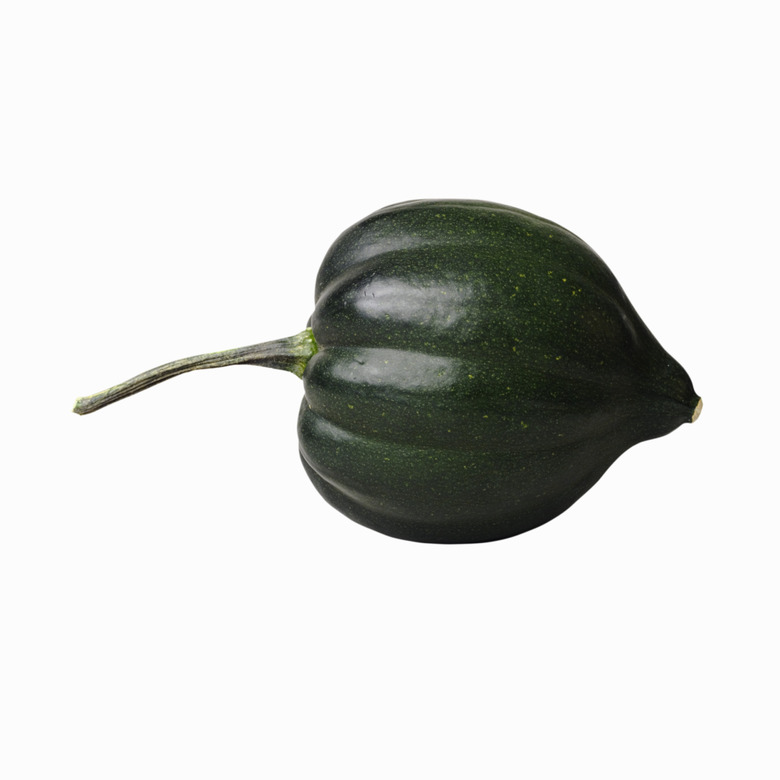How To Tell When Acorn Squash Are Ripe & Ready To Be Picked
The most common variety of acorn squash (Cucurbita pepo) has a dark green rind. However, newer varieties are creamy white, golden yellow, nearly black or variegated. Whatever the color, the yellow-orange flesh inside has a mild, sweet flavor. Harvest acorn squash at the peak of ripeness because immature squash doesn't store well and over-ripe squash loses flavor and quality quickly.
Timing
Step 1
Average time from planting seed to harvest is 80 to 100 days, depending on the weather and the variety of acorn squash. Once the flowers appear on the vines, expect an additional 45 to 55 days before the squash is ready to harvest.
Rind
Step 1
Unlike summer squash, harvested when the rind is tender and the seeds are undeveloped, winter squash is harvested when the rind is hard and squash is fully developed. An easy test for ripeness is to scratch the rind with your fingernail. A ripe acorn squash is difficult to scratch or dent.
- The most common variety of acorn squash (Cucurbita pepo) has a dark green rind.
Appearance
Step 1
Watch for harvest readiness when the acorn squash vines begin to die back and turn brown and and the stems are dry and withered. A ripe acorn squash displays an deep, even color and dull, smooth skin with no bruises, cracks, blemishes or soft spots. The skin of an unripe squash has a shiny, waxy appearance.
Firmness and Weight
Step 1
At maturity, a ripe acorn squash feels heavy in relation to its size. As a general rule of thumb, acorn squash weighs between 1 and 3 pounds at harvest time. An unripe acorn squash won't feel as heavy. Conversely, if a mature squash feels light in relation to its size, the squash may be losing moisture through the rind, which results in a dry, stringy texture and an unpleasant flavor.
- Watch for harvest readiness when the acorn squash vines begin to die back and turn brown and and the stems are dry and withered.
- At maturity, a ripe acorn squash feels heavy in relation to its size.
Harvesting
Step 1
Harvest acorn squash before the first heavy frost, as a frosted squash will soon rot. Use a sharp knife to cut the squash from the plant, leaving 1 to 2 inches of stem intact. Don't pull the squash from the vine because you may damage the skin, which allows moisture to enter the squash and shortens storage time. Store acorn squash in a dry, well-ventilated room where temperatures remain between 50 and 55 degrees Fahrenheit. When properly stored, acorn squash retains its quality for five to eight weeks.
References
- University of Illinois Extension: Winter Squash
- Utah State University Extension: Summer and Winter Squash in the Garden
- Iowa State University Extension: Harvesting and Storing Pumpkins and Winter Squash
- University of Nebraska Extension: Do You Know This About Acorn Squash?
- Purdue University Consumer Horticulture: Harvest Winter Squash This Summer
